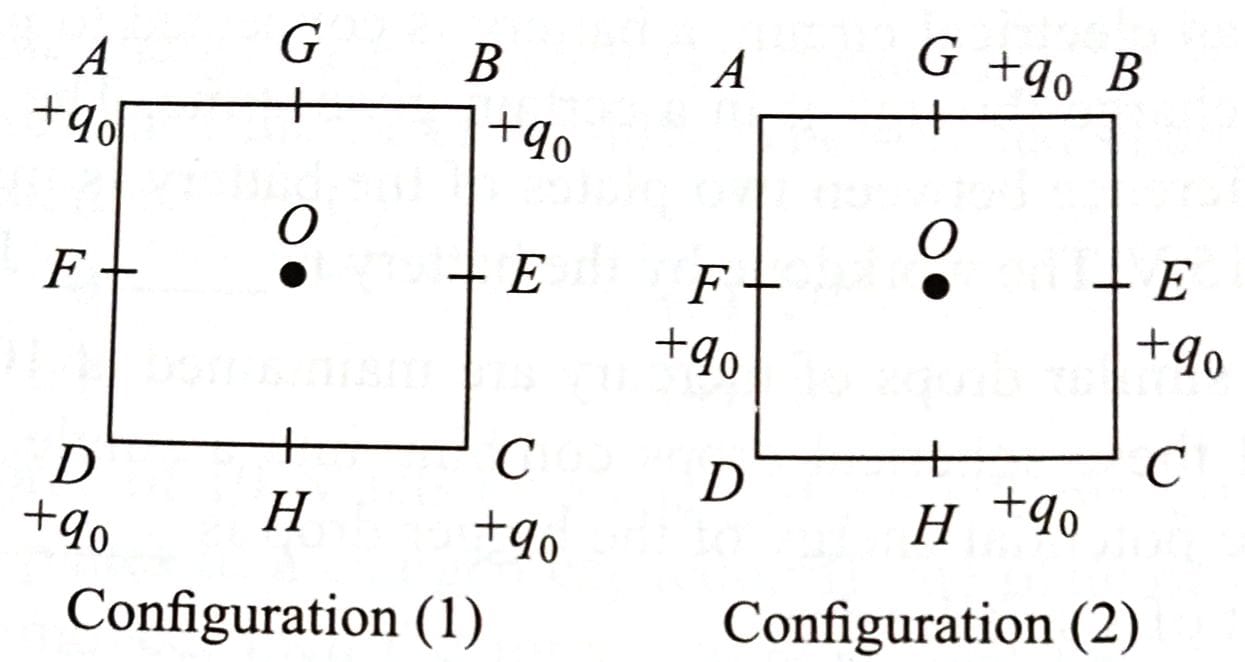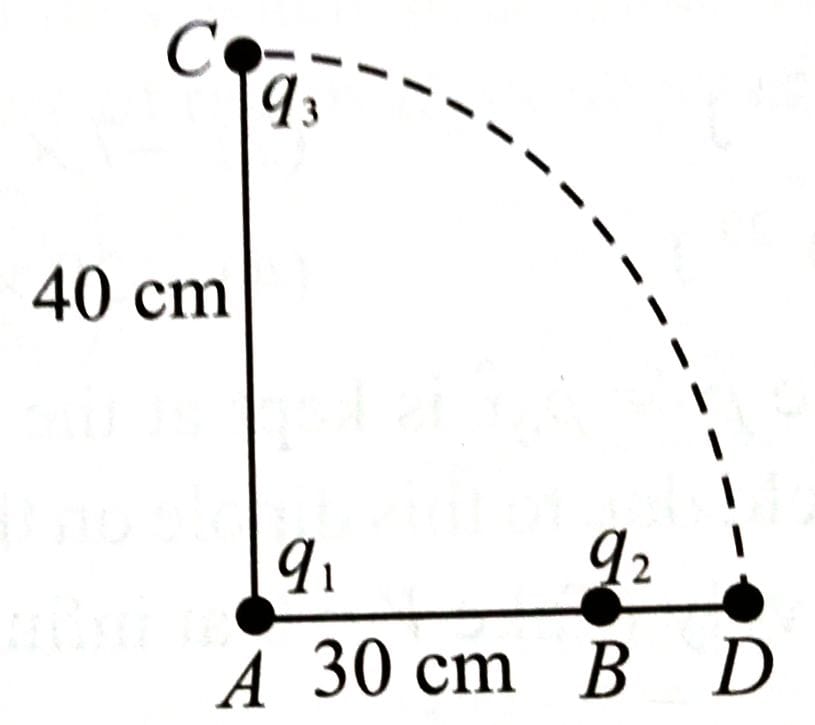Topic Question Set
Q 1
:
The potential energy function (in J) of a particle in a region of space is given as Here and are in meter. The magnitude of -component of force (in N) acting on the particle at point P(1, 2, 3)m is [2024]
2
6
4
8
(3)
Given
-component of force,
At magnitude of is 4 N
Q 2
:
Two charges 7 and –4 are placed at (–7 cm, 0, 0) and (7 cm, 0, 0) respectively. Given , the electrostatic potential energy of the charge configuration is: [2025]
–1.5 J
–2.0 J
–1.2 J
–1.8 J
(4)
P.E. of two charges,
= –1.8 J
Q 3
:

In the first configuration (1) as shown in the figure, four identical charges () are kept at the corners A, B, C and D of square of side length 'a'. In the second configuration (2), the same charges are shifted to mid points G, E, H and F, of the square. If , the difference between the potential energies of configuration (2) and (1) is given by [2025]

(4)
So,
Q 4
:
Two charges and are separated by a distance of 30 cm. A third charge initially at 'C' as shown in the figure, is moved along the circular path of radius 40 cm from C to D. If the difference in potential energy due to movement of from C to D is given by , the value of K is: [2025]


(1)
Potential at C,
Potential at D,
The difference in potential energy,
Q 5
:
Given below are two statements: one is labelled as Assertion A and the other is labelled as Reason R.
Assertion A : Work done in moving a test charge between two points inside a uniformly charged spherical shell is zero, no matter which path is chosen.
Reason R: Electrostatic potential inside a uniformly charged spherical shell is constant and is same as that on the surface of the shell.
In the light of the above statements, choose the correct answer from the options given below: [2025]
A is true but R is false.
Both A and R are true and R is the correct explanation of A.
A is false but R is true.
Both A and R are true but R is NOT the correct explanation of A.
(2)
Both A and R are correct and R is the correct explanation.

